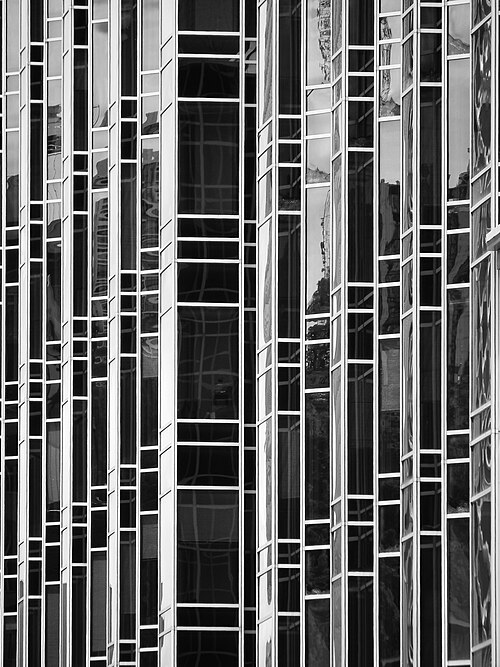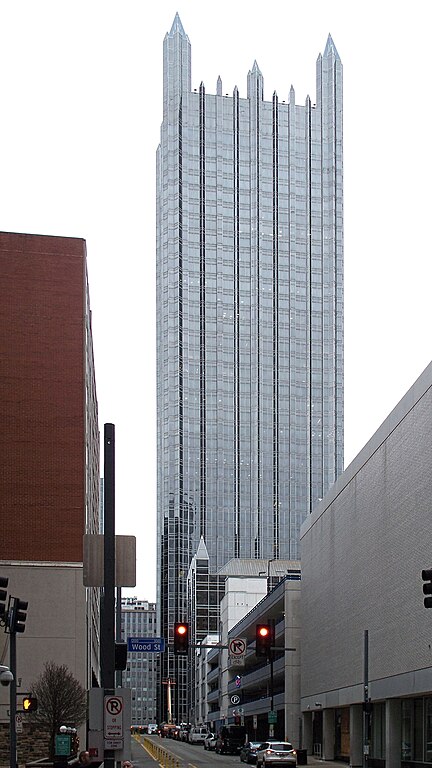
Comments

Adopting and heavily modifying an idea from Ludwig Mies van der Rohe, Philip Johnson surrounded the buildings of PPG Place with glass colonnades that create an inviting transition between inside and outside.




If you see a student of architecture suddenly stop in the middle of the Diamond and burst out laughing, this building is the subject of the mirth.
When it was announced that a gigantic complex to be designed by Philip Johnson was going to take over one corner of the Diamond, the owners of the Nicholas Coffee building, who happened to be ready for a renovation, decided to welcome their new neighbor with a parody of what was then Johnson’s most famous work. At that time, Johnson was notorious everywhere for his AT&T Building (now called just 550 Madison Avenue), which was a deliberate poke in the eye of orthodox modernism; and you have only to see it to get the Nicholas Building’s joke.
